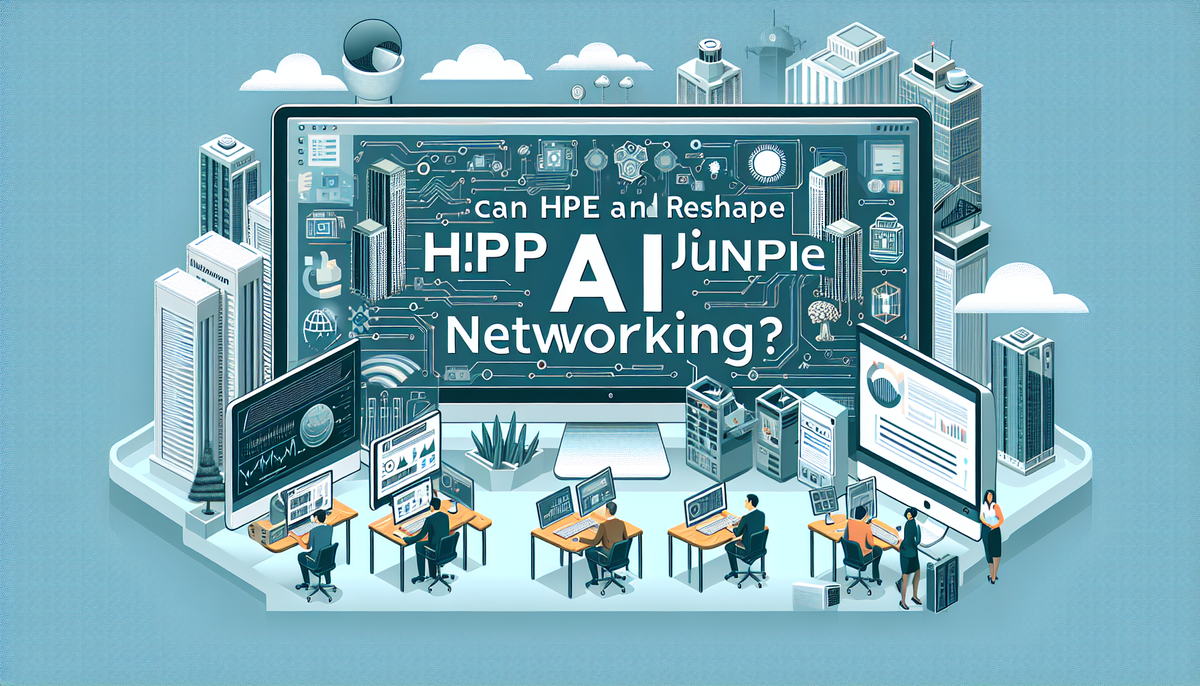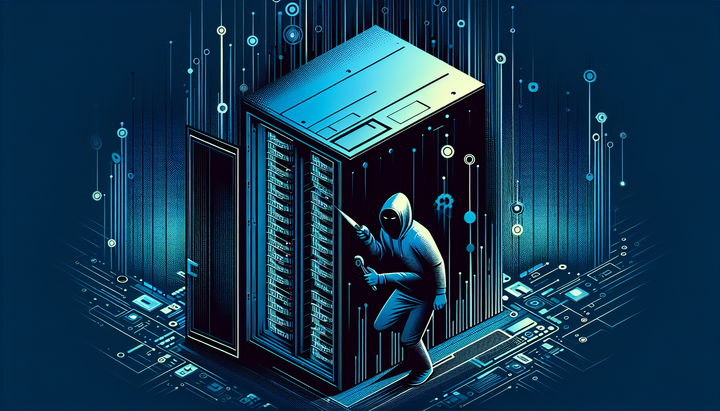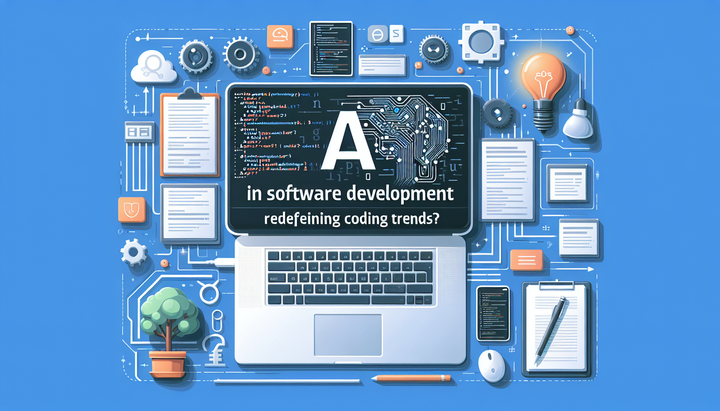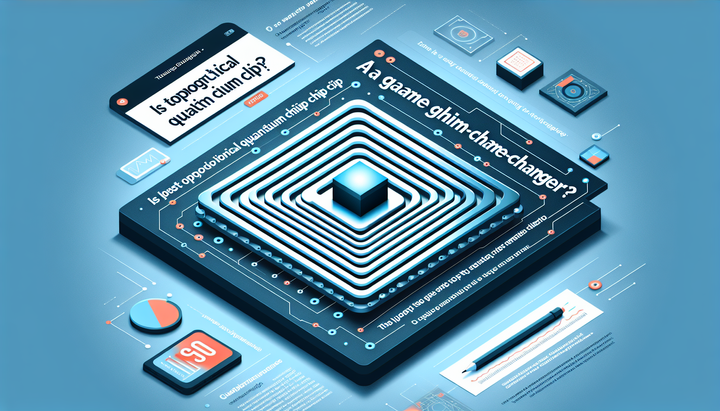Can HPE and Juniper Reshape AI Networking?

Introduction: The Confluence of Networking and AI
The technology landscape is undergoing constant evolution, and one of the most compelling shifts involves the integration of advanced networking with artificial intelligence (AI). In recent industry news, major players such as HPE and Juniper are at the center of a high-stakes merger that could redefine how modern networks are built, managed, and leveraged. This article explores the merger’s potential impact on AI-driven networking, emerging programming trends, and how software development is being reshaped by these converging forces.
Background: The HPE and Juniper Deal
HPE’s attempt to acquire Juniper Networks has raised significant debates among industry analysts and regulators. While the Department of Justice (DoJ) argues that the merger might reduce competition and lead to higher prices, proponents claim that such a union would spur innovation and create a competitive alternative to established tech giants such as Cisco and Huawei. Beyond the legal and economic implications, the merger is also seen as a transformative move for networking technologies in the era of AI and digital transformation.
The AI and Networking Convergence
One of the key drivers behind this merger is the growing importance of AI in network management. Modern networks are evolving from static, pre-programmed systems to dynamic, self-adaptive environments powered by AI. The integration of AI into networking allows for:
- Real-time data analytics that optimize performance
- Predictive maintenance reducing downtime
- Enhanced security measures through anomaly detection
- Automation of routine network tasks
By combining Juniper’s data center routing and switching expertise with HPE’s strengths in storage and computing, the united entity could offer integrated solutions that not only improve network efficiency, but also accelerate the deployment of AI-driven applications.
Emerging Programming Trends in Network Infrastructure
With the transformation of network architectures driven by new-age technologies, software development is experiencing a significant shift. Developers are now facing the challenge of integrating AI capabilities into network programming while maintaining security and sustainability. Some of the key emerging trends include:
- AI Programming and Automation: AI techniques are now being incorporated to automate network configurations and troubleshooting processes, reducing the need for manual intervention and increasing system reliability.
- Edge Computing Integration: With the proliferation of IoT devices, edge computing is becoming a core element of network design. Programming frameworks are evolving to cater to decentralized processing and data analysis at the network edge.
- Low-Code/No-Code Platforms: To address the shortage of skilled programmers, low-code and no-code solutions are empowering businesses to deploy networking solutions faster, enabling professionals to focus on higher-level strategic tasks.
- Security-First Coding Practices: As networks become more complex and interconnected, ensuring robust security through secure code practices remains paramount. Developers are adopting advanced frameworks and languages that prioritize encrypted data transfer and fraud detection.
Impact on Software Development and Developer Challenges
The convergence of AI and advanced networking is not only changing the way networks are built, it is also influencing the software development lifecycle. Developers are now tasked with creating multi-dimensional systems that encompass:
- Data analytics and machine learning models for real-time insights
- API integrations that facilitate seamless communication between different network components
- Cloud-based solutions where data storage and computing power meet cutting-edge networking technologies
However, these advances come with unique challenges. Developers must address issues such as legacy system integration, ensuring backward compatibility while adopting state-of-the-art techniques. The pressure to innovate in an environment where cyber threats are constantly evolving means that development teams need to be agile, continuously updating their skills and using modern best practices.
Case Study: How the Merger Could Boost Innovation
A detailed examination of previous tech mergers demonstrates the potential benefits of consolidations in driving innovation. With the HPE and Juniper deal, the following scenarios could unfold:
- Enhanced R&D Investments: A combined entity might channel increased resources into research and development, exploring new areas such as quantum networking and distributed AI systems.
- Improved Product Portfolios: By merging product lines, companies can eliminate redundancies and offer comprehensive solutions that cover everything from core data processing to edge deployment.
- Market Competition: With an increased focus on AI-enhanced systems, the merged entity has the potential to disrupt incumbent market leaders, challenging their pricing and service models.
- Partnership Ecosystems: The unification of expertise from both companies could also lead to strategic alliances with software developers and tech startups, fostering a collaborative environment for innovation.
Repercussions on Global Networking Competitiveness
The merger is also being analyzed in the context of international competition. On one hand, blocking the deal might preserve existing competitive balances; on the other hand, it could inadvertently stifle innovation by preventing the creation of a robust alternative to industry giants like Cisco. Some of the global implications include:
- Technology Sovereignty: Countries are increasingly emphasizing the importance of homegrown technology solutions. A combined HPE-Juniper force might help in reducing dependency on foreign tech, particularly from companies deemed as security risks.
- Market Dynamics: By intensifying the competition in the networking domain, customer choices may increase and prices may come under pressure, ultimately benefiting end users.
- Innovation Clusters: The concentration of resources and expertise within a single conglomerate could lead to the creation of innovation clusters that not only drive new solutions but also set industry standards.
Expert Opinions: The Road Ahead
Industry experts and analysts are divided on the long-term impact of the HPE-Juniper merger. Some believe that the new entity will be well-positioned to capitalize on a growing market for AI-enabled networks, while others caution that regulatory roadblocks and competitive inertia might negate many of the expected benefits.
According to leading technology consultants, companies in the network and software sectors must adapt rapidly to survive. They suggest that developers embrace continuous learning in disciplines such as machine learning, cloud computing, and secure software design. The evolution of the network infrastructure necessitates a broader strategic vision, where software and hardware innovations are directly aligned with market needs.
The Role of Emerging Frameworks and Technologies
As the networking environment becomes more dynamically interlinked with the world of AI, new programming frameworks and development tools are rapidly emerging. These include:
- AI-Driven Monitoring Tools: These tools use machine learning algorithms to predict network anomalies and streamline troubleshooting processes.
- Cloud-Native Microservices: In a world where scalability is critical, microservices offer a modular approach to building and deploying network applications.
- Open-Source Platforms: Communities around open-source projects continue to drive innovation, ensuring inclusive growth by allowing developers to contribute to cutting-edge solutions.
Developers are encouraged to engage with these technologies to create robust, scalable, and secure systems. This not only enhances their individual skill sets but also contributes to the overall evolution of the industry.
How Low-Code and No-Code Platforms Influence Networking
One of the most promising trends in modern software development is the rising popularity of low-code and no-code platforms. These tools are designed to democratize programming by reducing the technical expertise required to create sophisticated applications. Their influence on modern networking is profound in several ways:
- They allow for rapid prototyping, enabling quicker response times to emerging challenges in network management.
- They empower a broader segment of the workforce, including non-developers, to contribute innovative ideas and solutions that bolster network resilience.
- They serve as an incubator for hybrid applications that seamlessly blend traditional coding with innovative visual programming techniques.
As these platforms mature, they are expected to play a pivotal role in the evolution of network systems by streamlining development cycles and reducing operational costs.
Challenges and Considerations for Developers
Despite the clear benefits and various opportunities offered by the confluence of AI and next-generation networking, developers face several challenges:
- Legacy System Integration: Many organizations still rely on older, legacy systems that are not easily adaptable to modern architectures. Developers must bridge the gap between old and new technologies.
- Security Concerns: With cyber threats on the rise, maintaining a secure codebase is more critical than ever. Implementing stringent security measures during both development and deployment phases is crucial.
- Skill Gaps: The rapid pace of innovation in both networking and software development demands continuous learning. Developers and IT professionals must invest in upskilling to stay relevant.
- Scalability Issues: As AI-powered networks expand in scope and size, ensuring that applications scale seamlessly becomes a complex problem that needs innovative solutions.
Overcoming these challenges requires a collaborative approach where developers, network engineers, and business leaders work together to foster an environment of continuous improvement.
Looking to the Future: Key Takeaways
The potential merger between HPE and Juniper represents more than just a corporate consolidation; it symbolizes a strategic shift in how technology converges to meet modern demands. Here are some of the key takeaways for the industry:
- The fusion of AI and network technologies is set to redefine performance standards and create more responsive, secure, and intelligent systems.
- Emerging programming trends such as AI automation, microservices architecture, and low-code platforms are central to this evolution.
- Regulatory decisions and global market dynamics will significantly influence the success of this merger and the future trajectory of networking solutions.
- Developers must continuously upskill and adapt to new technologies to navigate this transformative period effectively.
Conclusion: Embracing Innovation in a Changing Landscape
The journey towards integrating cutting-edge AI with advanced networking is filled with both challenges and remarkable opportunities. The HPE and Juniper saga is a vivid reminder of how strategic business decisions can have far-reaching implications—not just for market competition, but also for the evolution of technology as a whole.
As organizations worldwide embrace digital transformation, the demand for intelligent, robust, and secure networking solutions is set to soar. Developers, industry experts, and business leaders need to be proactive, staying informed and adaptable to leverage these advancements to their fullest potential. Whether it is through embracing low-code development platforms, integrating edge computing, or adopting new security frameworks, the future of networking is tightly interwoven with the innovations that are defining our digital age.
In summary, the HPE-Juniper merger serves as a case study in how technological convergence drives not only market dynamics but also the evolution of programming and software development practices. By understanding these emerging trends and preparing for the associated challenges, industry professionals can excel in a competitive environment and contribute to building a more connected and intelligent future.
Additional Resources and Expert Insights
For those interested in further exploring the topics discussed in this article, the following resources can offer additional insights:
- Whitepapers on AI in networking and predictive analytics
- Webinars featuring industry experts discussing the future of digital transformation
- Case studies on successful integrations of low-code/no-code platforms in network management
- Technical blogs on emerging programming languages and frameworks for networking
By leveraging these resources, developers and IT professionals can continue to expand their knowledge base, ensuring that they remain at the forefront of innovation in an era defined by rapid technological evolution.
Final Thoughts
As AI continues to transform industries worldwide, the integration of these technologies with next-generation networking will be critical. The HPE and Juniper narrative provides a glimpse into a future where technological convergence not only solves existing problems but also creates new opportunities for innovation and growth. Whether you are a developer, a network engineer, or a business leader, staying informed about these trends is essential for navigating the rapidly changing digital landscape.
The journey is just beginning, and while challenges lie ahead, the potential rewards in terms of efficiency, security, and performance are immense. Embrace the changes, prepare for the future, and be ready to lead the charge in an era where networking meets AI.



Comments ()